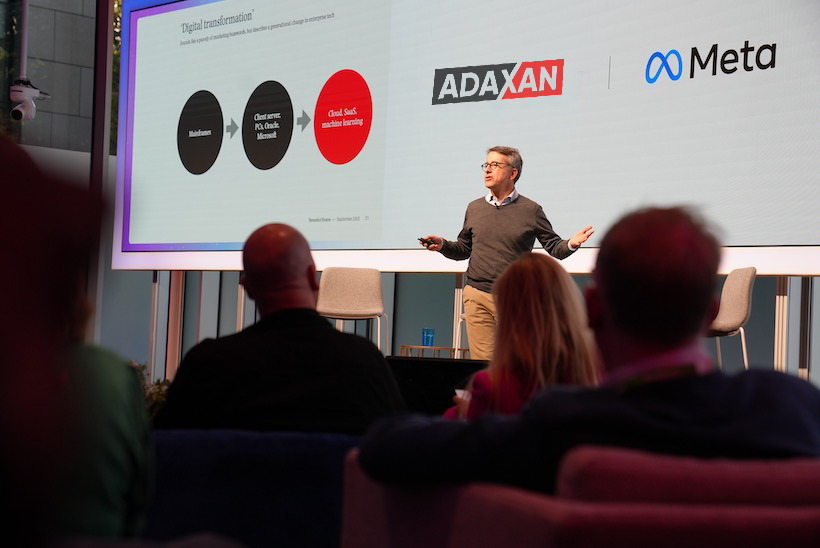Programmatic advertising has transformed the way digital ads are bought and sold. By leveraging automated technology, programmatic advertising enables real-time bidding and targeting of ad inventory, making it possible to reach specific audiences with greater precision and efficiency. In this article, we’ll explore the history of programmatic advertising, from its early days to its current state and future potential.
The Early Days of Programmatic Advertising
The roots of programmatic advertising can be traced back to the late 1990s, when ad networks were created to help connect publishers with advertisers. These networks provided a platform for advertisers to place ads on multiple websites, while publishers could monetize their ad inventory by offering it to advertisers.
Ad networks were initially based on a traditional model of ad buying, in which advertisers would pay a fixed rate for ad impressions. However, this approach was not efficient, as advertisers could end up paying for ad space that was not seen by their target audience.
As a result, the industry began to move towards a more targeted approach, with the introduction of behavioral targeting. Behavioral targeting involves using data on user behavior to deliver ads that are more relevant to their interests and needs. This approach paved the way for the emergence of programmatic advertising.
The Rise of Real-Time Bidding
Programmatic advertising as we know it today began to take shape in the mid-2000s, with the advent of real-time bidding (RTB) technology. RTB enabled advertisers to bid in real-time on ad inventory, as it became available on various websites and apps. This meant that advertisers could target specific audiences based on various factors, such as demographics, browsing behavior, and location.
RTB represented a major shift in the way that digital advertising was bought and sold. Instead of buying ad inventory in bulk, advertisers could now purchase individual impressions, with bids based on their perceived value. This made it possible to reach highly specific audiences with greater precision and efficiency.
However, RTB was not without its challenges. Ad fraud and viewability issues were major concerns, as advertisers had limited visibility into the quality of the ad inventory they were purchasing. As a result, the industry began to develop new technologies and standards to address these issues.
The Emergence of Programmatic Direct
Another major development in the evolution of programmatic advertising was the emergence of programmatic direct. Programmatic direct is a way for advertisers to purchase ad inventory directly from publishers, without going through an ad exchange or other intermediary.
Programmatic direct offers several benefits over traditional programmatic advertising. For one, it allows advertisers to have more control over where their ads are placed and the quality of the ad inventory. Additionally, it eliminates the need for an intermediary, reducing costs and increasing transparency.
However, programmatic direct also has its limitations. Since advertisers are purchasing ad inventory directly from publishers, they may not have access to as much data on user behavior, limiting their targeting capabilities.
The Evolution of Programmatic Advertising
In the years since RTB first emerged, programmatic advertising has continued to evolve and innovate. New ad formats and targeting capabilities have been introduced, making it possible to reach highly specific audiences with greater precision and efficiency.
One of the most significant developments in recent years has been the use of artificial intelligence (AI) to analyze large amounts of data and optimize ad campaigns. AI enables advertisers to automate many of the processes involved in programmatic advertising, including bidding, targeting, and creative optimization.
Another area of innovation has been the use of programmatic advertising in emerging channels, such as connected TV (CTV) and digital out-of-home (DOOH) advertising. CTV and DOOH offer unique opportunities for programmatic advertising, as they allow advertisers to reach audiences in new contexts and environments.
What The Future of Programmatic Advertising Looks Like
Programmatic advertising has come a long way since the introduction of real-time bidding (RTB). It has revolutionized the digital advertising industry by enabling targeted advertising and providing greater efficiency. However, what does the future hold for programmatic advertising?
Automation and AI
One of the most significant developments in programmatic advertising is the increasing use of automation and artificial intelligence (AI). This trend is likely to continue in the future, as it helps streamline the process of placing and bidding for ads while also leveraging big data to ensure that the right ad is placed in front of the right viewer at the right time. AI can analyze data on user behavior and optimize ad campaigns, leading to more efficient and effective ad placements.
Private Marketplaces
While broad market ad servers are great for reaching a broad audience, the future of programmatic advertising may involve a shift towards private marketplaces that specialize in specific websites and customers. This shift from an open ad exchange will allow companies to drill down deep into demographics and interests to place ads that are hyper-targeted for maximum relevance and impact. Private marketplaces may also offer increased transparency and control over where ads are placed and the quality of ad inventory.
Ad Experimentation
With the increasing availability of tools to quickly create and place ads, there is likely to be more focus on experimentation to create the perfect ad for specific target audiences. Ad experimentation is still in its infancy, but as more data becomes available, advertisers can test different ad formats, messaging, and creative elements to find the most effective combination.
In conclusion, the future of programmatic advertising is likely to involve further automation and the increased use of AI, the growth of private marketplaces, and an emphasis on ad experimentation to create the most effective ads. As the digital advertising landscape continues to evolve, programmatic advertising will continue to adapt and innovate to stay ahead of the curve.






About The Author: Kevin Watts
Kevin Watts is the founder of Raincross, a premier web design, development and digital marketing agency headquartered in Riverside, CA.
Kevin got his start in online marketing and website design by working for some of the most prominent names in online retail. He's most recognized for helping to start e-commerce retailer Organize.com in 1998, and spent 12 years running the company's e-commerce and online marketing operations. He has been recognized and has received several online retail, marketing and merchandising awards throughout his career.
Kevin grew up in Riverside, CA and graduated from the University of Wyoming. In his spare time, Kevin is an avid fly-fisherman, college football fan, and enjoys spending time with his son Matthew, daughter Kate and wife Lindsey.
More posts by Kevin Watts